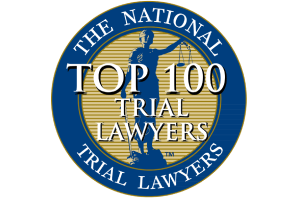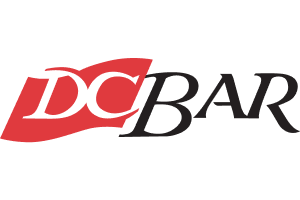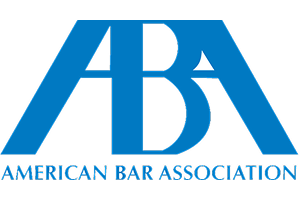Your Family
Heart Attacks
General
A heart attack or what is also known as a myocardial infarction, is when a part of the heart muscle dies because it does not receive enough oxygen. The arties are the vessels that carry oxygen to the heart. Often heart attacks are the result of the blood vessels being blocked for whatever reason. The predominant reason for blockage is what is commonly called artheroscelorosis or an accumulation of plaque inside the arteries. The plaque or fatty deposits retard the flow of blood and oxygen. Rather than being caused by build up og plaque in the arteries, some heart attacks are caused by a clot that lodges with the arterial wall leading to the heart. Again, artherosclerosis can narrow the artery thereby making it susceptible to blockage by a clot.
There are numerous signs and symptoms of a possible heart attack. These include the feeling of tightness in the chest, shortness of breath, pain from the chest into the jaw, left arm or shoulder, pressure or crushing pain in the chest which can also include sweating, nausea or vomiting. Proper diagnosis of heart issues because of early detection of these symptoms by the physician can help save the heart from further damage.
In the event a patient calls the physician because of the above referenced symptoms, the patient should be told to go to the emergency room of the closest hospital immediately. If the symptoms are such that the patient needs transportation and/or simply should not even attempt to drive himself or herself, an ambulance should be called immediately.
The treating physician should maintain a good history on his or her patient. For example, smoking, diabetes, increasing age, high cholesterol levels, family history, stress, lack of exercise, obesity can all predispose a person to heart issues.
Strokes are caused by an artery that blocks the flow of blood to the brain. Another term used for a stroke is a transient ischemic attack (TIA). If the brain does not get the blood it needs, it can become damaged as a result. Function or use of an arm or leg can be the result of a stroke. It is extremely important for the physician to initiate immediate procedures to get the blood flowing to the brain as freely as possible and as soon as possible after at stroke issue.
Similarly, the trained physician should recognize the signs and symptoms of a stroke. For example, if a person has sudden weakness or numbness in the face or an extremity on one side of the body, loss of vision in one eye, loss of speech, trouble communicating or understanding, sever unexplained headache, dizziness, instability are all significant warning signs that the patient suffered a possible stroke. A person who suffers a stroke is very susceptible to suffering a further stroke in the future.
High blood pressure or hypertension occurs when the blood is moving throughout the body at a higher pressure than normal. Blood pressure has two measurements, systolic and diastolic. Systolic is the peak pressure when the heart is squeezing the blood out. Diastolic is the pressure when the heart is filling with blood or relaxing between beats. A physician would consider normal blood pressure to be 120/80. High blood pressure is in the range of 140/90 or higher. If the blood pressure falls below high blood pressure and normal blood pressure it is usually referred to as pre hypertension. High blood pressure can lead to damaged blood vessels which in turn can lead to strokes. Unfortunately, high blood pressure may not have symptoms, which is the reason why it is important for the physician to test the patient regularly. Treatment for high blood pressure may involve change in lifestyle and medication. The medications may include diuretics to eliminate sodium and fluid, Beta-blockers in order to block the effects of adrenaline, Alpha-blockers to assist the vessels to remain open, ACE inhibiters to prevent vessels from constricting by blocking the body from making angiotensin II which is a chemical that constricts blood vessels, calcium channel blockers to prevent vessels from constricting by blocking calcium from entering the cells, combination of ACE inhibiters with a calcium channel blocker.
Angina is a term that refers to a squeezing or pressing pain in the chest that is often the result of blocked arteries. It is also sometimes referred to as coronary artery disease or heart disease. Often angina is felt when walking, exercising, climbing stairs and the like. If the pattern is irregular, it is often referred to as unstable angina.
Standard of Care
The treating physician should perform an electrocardiogram whenever there is a suspicion of heart issues. The EKG or EEG as it is often referred to, can demonstrate whether the heart tissues have been damaged. A secondary test after an EKG/EEG would be a stress test. Frequent this involves walking on a treadmill and having x-rays taken before and after the exercise which will demonstrate the sufficiency of insufficiency of blood flow to the areas of the heart. The stress test followed by x-rays can suggest whether arteries are blocked. If there is further suspicion of heart disease, the treating physician might pursue a cardiac catheterization where a tube is inserted into the artery in the arm or leg and guided into the heart. Thereafter dye is injected into the arteries around the heart and x-rays are taken to determine if blood supply is blocked.
In the event there are issues with the heart that require further intervention, the physician might consider and angioplasty. This surgical procedure involves the use of a tiny balloon to push open a blocked artery around the heart. Again, the balloon is inserted in an artery in the arm or leg and a small metal rod called a stent may be placed in the artery where the blockage occurred in order to keep the artery open.
Bypass surgery is yet another option for treatment of heart disease depending on the severity of the blockage of the vessels. In this procedure, the surgeon will remove pieces of veins or arteries from the legs and sew them into the arteries of the heart in order to transport blood past a blockade and thereby increase the blood flow to the heart. The surgeon should probably utilize angioplasty first if possible and appropriate before performing bypass surgery.
Peripheral artery disease (PAD) suggests a problem with blood flow in the arteries that carry blood from the heart to the muscles and organs in the body. When not enough blood is flowing to muscles claudication or pain in the calf muscle or thigh muscle can result. Usually, these issues are treated with diet and exercise. If the arteries are significantly blocked, the physician should probably attempt an angioplasty with insertion of a stent to hold the artery open.
Another procedure that can be used in order to help the heart beat steadily is the implantation of a cardioverter-defibrillator (ICD) device. This device monitors the heartbeat and corrects heart rhythm problems known as ventricular tachycardia (slow beating heart) or ventricular fibrillation (fast and irregular heartbeat). It acts as a pacemaker to keep the heat on an even keel.
Cholesterol is a waxy substance that is produced by the body and protects nerves, makes cell tissues and produces hormones. It is present in meat and dairy foods. There are two main types of cholesterol, what is called low density lipoprotein (LDL) and high density lipoprotein (HDL). LDL is thought of as the bad cholesterol because it builds up inside the arteries and blocks blood flow. HDL actually protects arteries from build up which is why it is referred to as good cholesterol. Too much LDL in the blood can raise the risk of heart attack. Thus, the treating physician should frequently order blood work to check for cholesterol level, especially LDL levels. Total cholesterol levels under 200 are considered best. Total levels at 240 or more suggest risk for heart problems. LDL levels below 130 are considered near optimal where LDL levels under 100 are considered ideal. LDL levels between 130 and159 are borderline and those over 159 are considered high. HDL levels less than 40 suggest higher risk for heart disease and levels of HDL of 60 or higher are deemed to highly reduce risk of heart disease. You doctor should suggest dietary changes and medications if you are at risk for heart disease.










